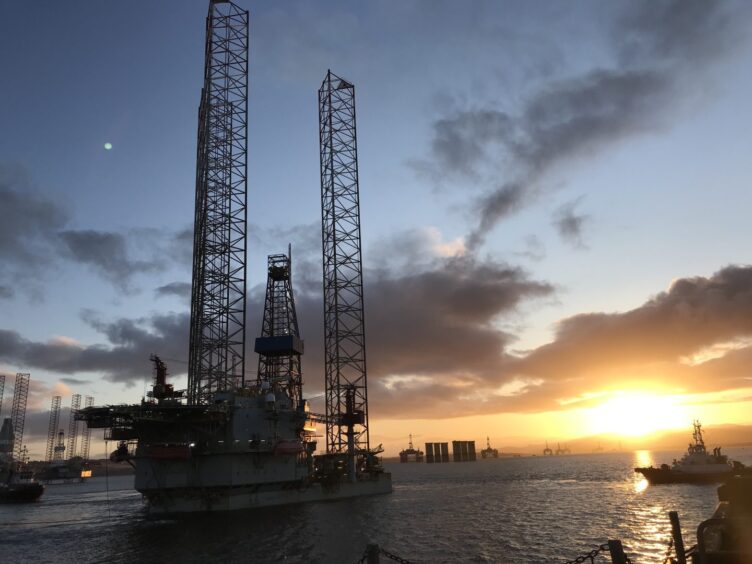 © Supplied by Global Energy Group
© Supplied by Global Energy Group An exodus of drilling rigs from the North Sea could curb plans to drill the hundreds of wells needed to make the basin’s carbon storage ambitions a reality.
Addressing the Subsea Expo conference in Aberdeen on Tuesday, Westwood Global Energy’s new energies research manager Stuart Leitch said there is “considerable potential” demand for drilling assets in the UK and northwest Europe as nations look to expand carbon capture and storage (CCS) capacity.
However a lack of clarity on investible projects and development timelines, coupled with an exodus of drilling rigs from the region, makes for ongoing uncertainty around the units available.
It comes amid longstanding warnings from the drilling sector over the impact of lost assets on the viability of the basin.
Some 21 CCS projects across northwest Europe are likely to require a jackup or semisubmersible rig between 2024 and 2035, according to the group’s RigLogix platform. At present however, only the Porthos scheme in the Netherlands and Norway’s Northern Lights project are in the construction phases.
Meanwhile operators are yet to make any final investment decisions (FIDs) on major UK developments, including those linked to major cluster schemes such as HyNet and the East Coast Cluster.
17 rigs lost so far
Nine jackups and eight semisubmersible rigs have departed the region in recent years, or are scheduled to depart imminently. It is the former that are expected be most in demand for UK CCS, with all planned projects located in water depths of less than 115m.
The UK leads the tally of Westwood’s forecast activity, with an estimated 1,400 minimum rig days awarded and a further 6,250 potentially required. That compares with 3,500 days in Norway, just under 1,000 off the Netherlands and 560 in Denmark.
Of those CCS projects on the horizon, Perenco leads the pack of operators with an estimated 31 wells, followed by BP (17), Spirit Energy (16), and Harbour Energy (10).
However, Mr Leitch warned that CCS campaigns will typically be shorter with a smaller number of wells than other upstream work, which may increase costs to operators and lead to further issues in securing drilling assets.
“Another challenge we have…is that a lot of these projects are phased.
“They’re not going to be looking to drill 10, 15, 20 wells in one go – it will be a few wells to begin with until the capacities on these projects ramp up, meaning shorter campaigns and likely higher day rates.”
All told, Mr Leitch said the group expects just a “handful” of rigs will support projects in the coming years, though a “considerable increase” could arrive towards the end of the decade.
Westwood separately warned that if further rigs leave for multi-year campaigns elsewhere there may not be enough capacity to fulfil some these longer-term CCS and decommissioning campaigns.
Mr Leitch suggested the wider picture for the subsea supply chain is rosier, with the CCS sector expected to make up nearly half (46%) of the $11.6 billion in offshore greenfield spend over the four between 2024-28. That compares with just 2% of a similar spend between 2019-23.
‘A real danger’ for UK
The drilling sector was long warned of the lasting impact of rigs moving overseas amid diminished prospects in the UK North Sea, laying the blame on the increased tax burden and uncertainty over future investments.
Darren Sutherland, chairman of the North Sea chapter of the International Association of Drilling Contractors said the drilling sector was the “tip of the spear” for well developments, whether they are needed for oil, gas or CCS.
“It is not a case of not wanting to work in the North Sea, but it is becoming financially untenable for drilling rigs to remain awaiting longer-term work programmes to materialise and we do not see the situation changing,” he noted.
In a letter sent to MPs last spring, the association warned there is “a real danger that the UK will be left without the resources and talent to make the energy transition a reality safely.”
